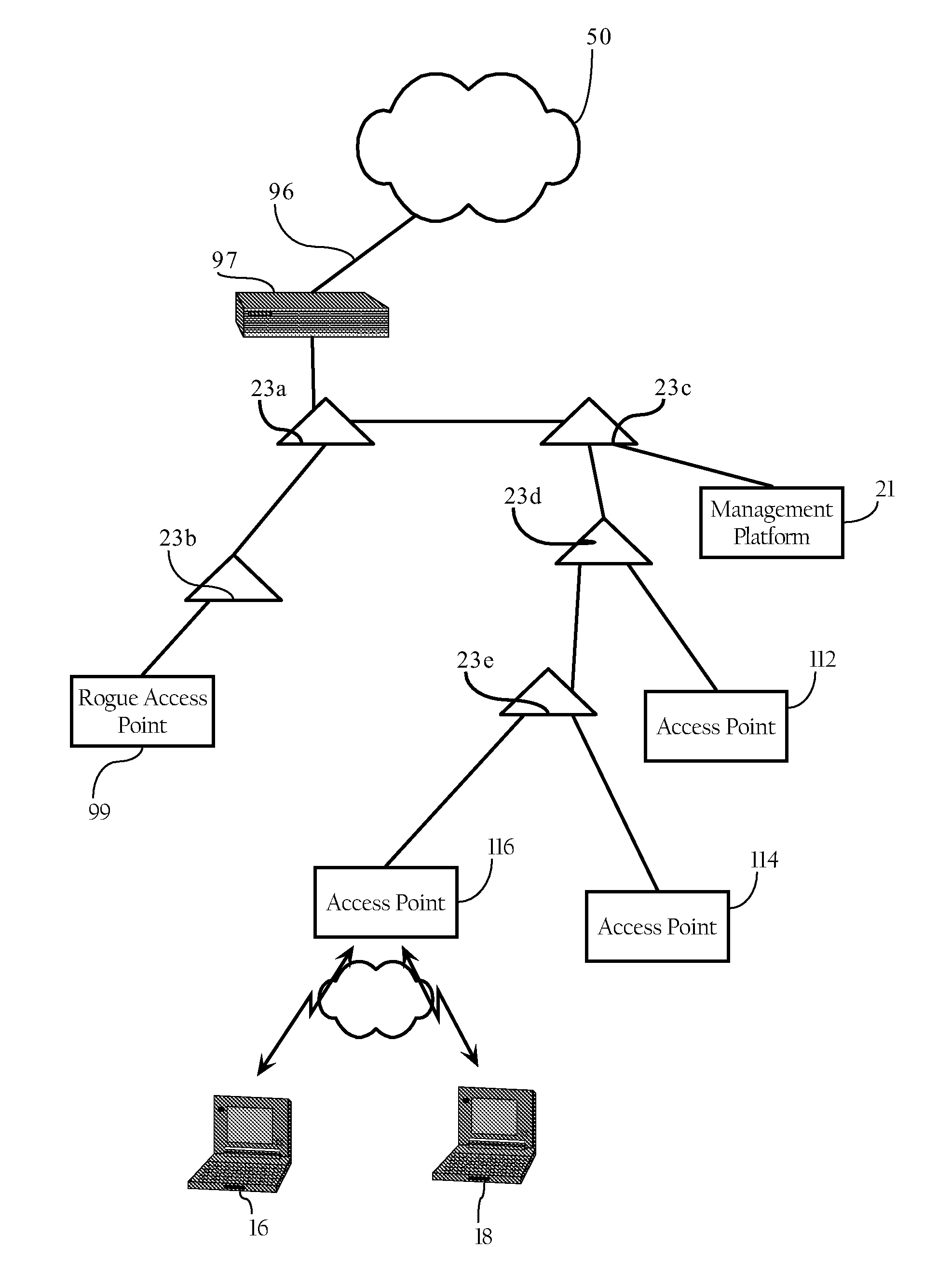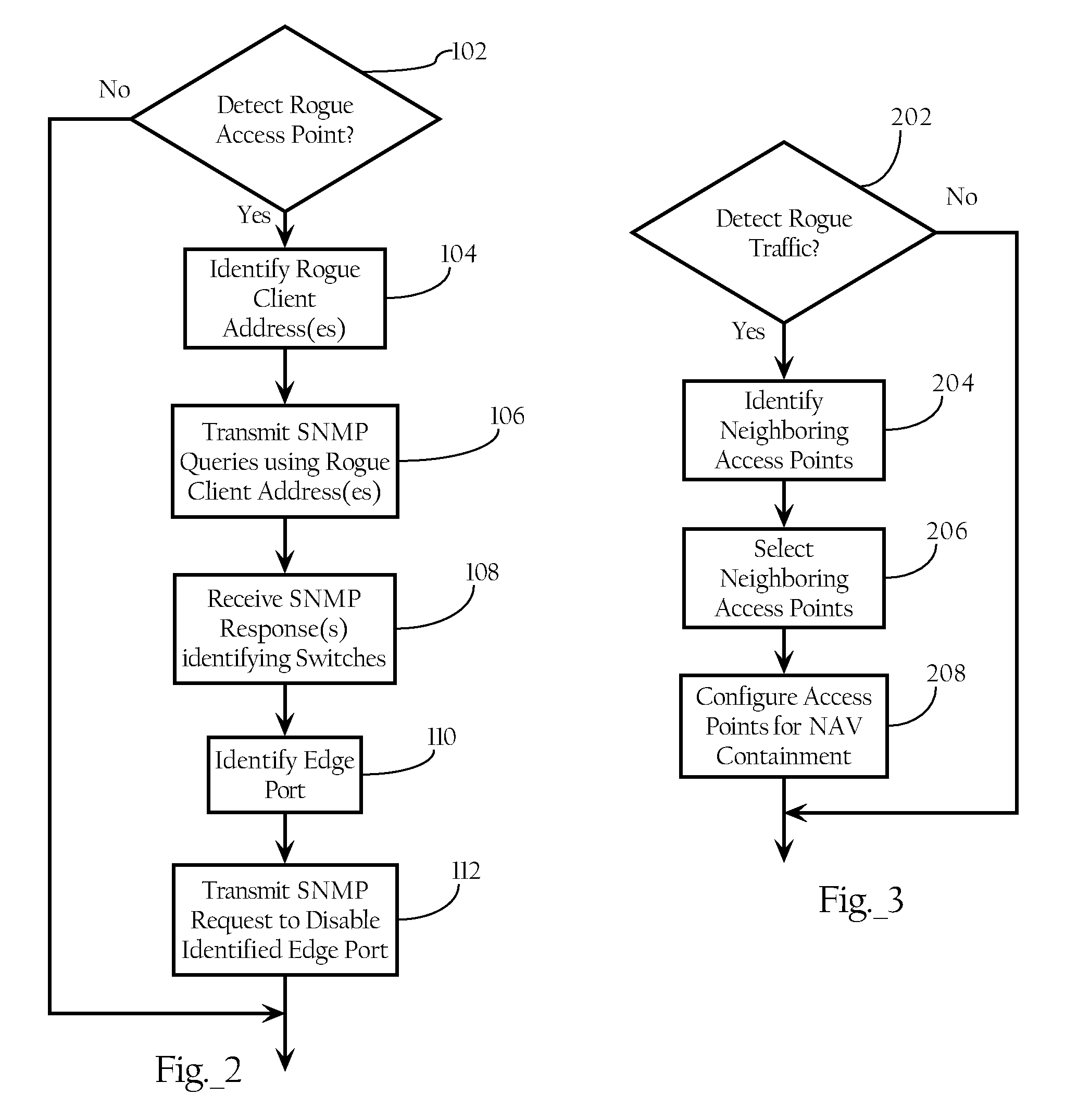Discovery of Rogue Access Point Location in Wireless Network Environments
a wireless network environment and access point technology, applied in the field of wireless computer networks, can solve the problems of time-consuming and expensive site surveys and inspections, affecting the performance of the enterprises own wireless network infrastructure, and posing security risks on the wireless network
- Summary
- Abstract
- Description
- Claims
- Application Information
AI Technical Summary
Benefits of technology
Problems solved by technology
Method used
Image
Examples
Embodiment Construction
)
[0025] The rogue containment functionality described herein assumes that one or more rogue access points have been detected. U.S. application Ser. No. 10 / 155,938, identified above, discloses methods, apparatuses and systems for detecting rogue access points over the airspace associated with a wireless network environment. However, the method according to which rogue access points are detected, as well as the devices and systems employed to detect them, are not critical to the rogue containment functionality of the present invention. Rogue access point detection may, as described in the above-identified application, be integrated into the wireless network environment and, therefore, automated. Alternatively, rogue access point detection may be executed in a more manual fashion, such as manually sweeping different coverage areas with a WLAN tester. However, as disclosed in U.S. application Ser. No. 10 / 155,938, the wireless network system can, in one embodiment, report detected rogue ...
PUM
 Login to View More
Login to View More Abstract
Description
Claims
Application Information
 Login to View More
Login to View More - R&D
- Intellectual Property
- Life Sciences
- Materials
- Tech Scout
- Unparalleled Data Quality
- Higher Quality Content
- 60% Fewer Hallucinations
Browse by: Latest US Patents, China's latest patents, Technical Efficacy Thesaurus, Application Domain, Technology Topic, Popular Technical Reports.
© 2025 PatSnap. All rights reserved.Legal|Privacy policy|Modern Slavery Act Transparency Statement|Sitemap|About US| Contact US: help@patsnap.com



